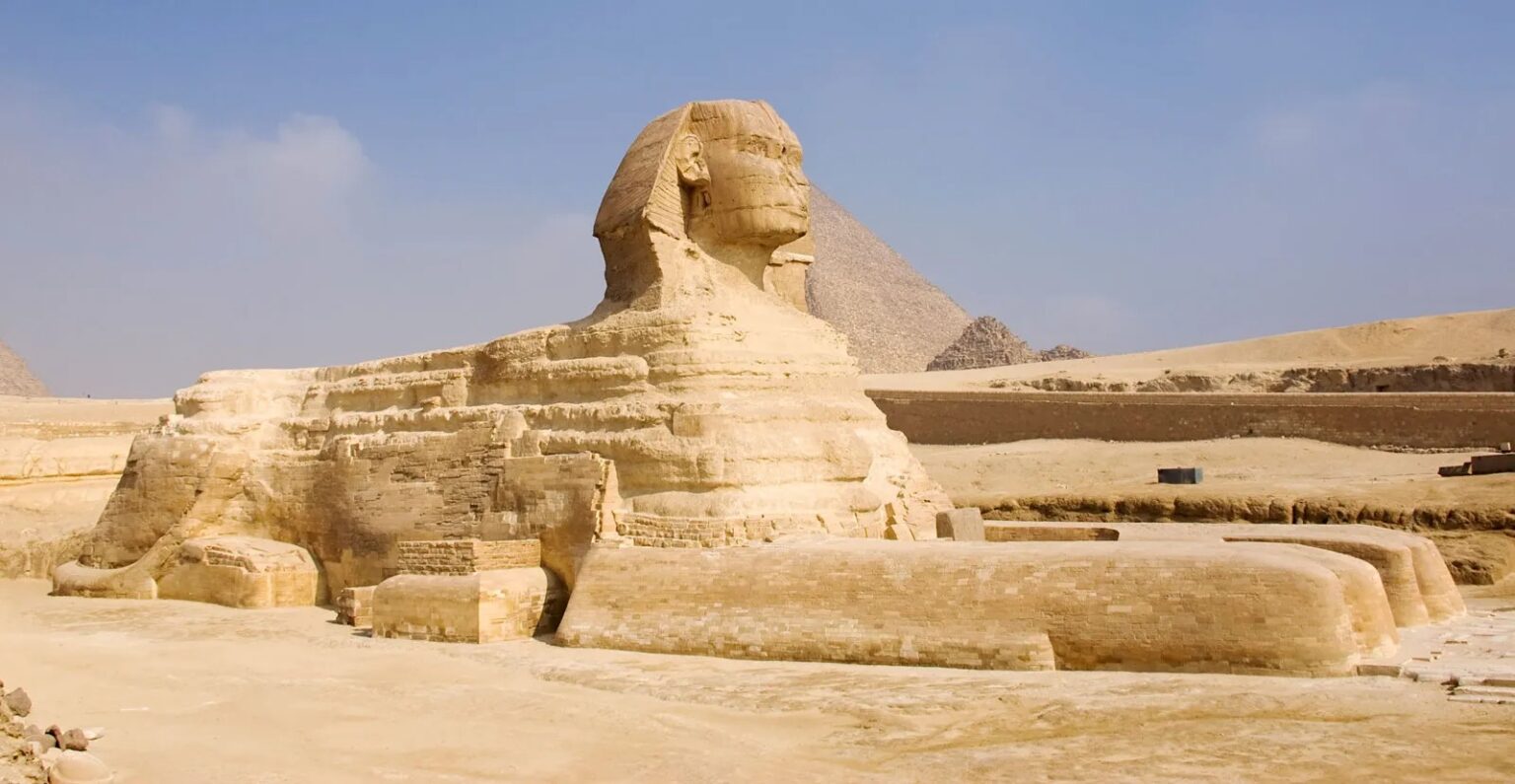The art discovered in the temple of Dendera is believed to have been influenced by the Roman emperor Claudius.
A sphinx-like statue and the remains of a shrine were discovered by archaeologists in an ancient temple located in southern Egypt’s Qena province, about 280 miles (450km) south of Cairo, as announced by Egypt’s antiquities ministry.
According to the statement by the ministry, the archaeologists suggest that the cheerful expression depicted on the statue could possibly be of the Roman emperor Claudius, who ruled over North Africa between AD41 and AD54.
In addition to the sphinx-like statue and shrine, the team of archaeologists also discovered a stone slab from the Roman era featuring inscriptions in demotic and hieroglyphic scripts. The shrine itself, made of limestone, has a two-layer platform and a mud-brick basin that date back to the Byzantine era, as per the ministry’s statement.
The statement added that additional analysis will be conducted by scientists on the inscriptions present on the stone slab. This could potentially reveal further information regarding the identity of the statue and the surrounding area.
In comparison to the 20-meter tall sphinx located in the Pyramids of Giza complex, the recently discovered statue is significantly smaller.
The Egyptian government often promotes such findings with the intention of increasing tourism, which is a crucial source of foreign currency for the financially troubled nation.

